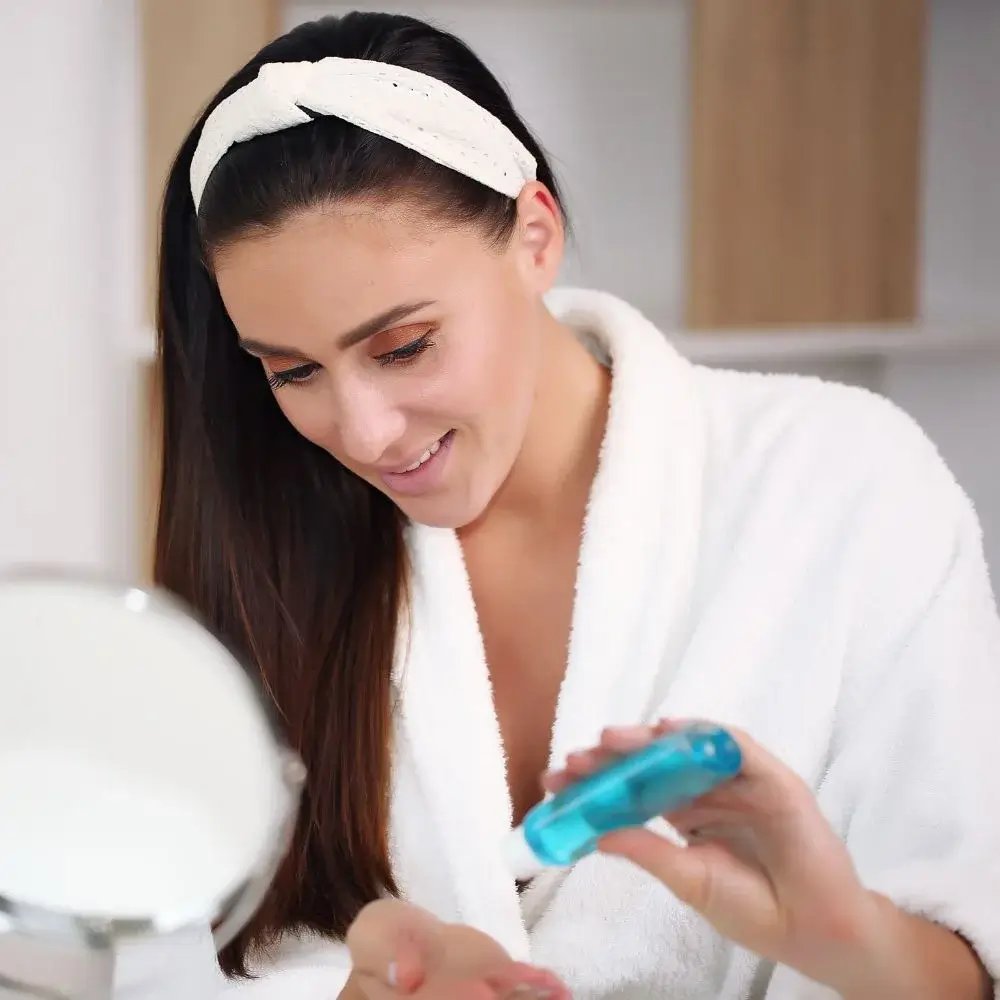Acne is a common skin condition, and almost everyone suffers from it at some point. However, there is more than one type of acne, and fungal acne is a lesser-known variant. Fungal acne is caused by a type of yeast called Malassezia, which leads to small, uniform, itchy bumps on the skin. In this blog post, we will explain fungal acne, how to identify it, and how it's different from regular acne.
Fungal acne is caused by an overgrowth of yeast called Malassezia. Unlike regular acne, fungal acne appears as tiny, itchy bumps that are usually uniform in size and shape, with little to no inflammation. Fungal acne is caused by an overgrowth of yeast on the skin's surface and hair follicles, leading to an inflammatory reaction by the skin. Regular acne occurs due to the blockage of hair follicles by dead skin cells, oil, and bacteria.
Fungal acne is most commonly found on the back, chest, and forehead, as these areas have more oil glands, which provide the ideal condition for yeast to grow. Fungal acne is also more common in individuals with a weakened immune system or taking medication that suppresses the immune system.
Fungal acne can be challenging to diagnose, as it masquerades as regular acne. However, there are a few signs that can help differentiate fungal acne from regular acne. Fungal acne usually appears as small, itchy, white, or red bumps with little to no inflammation. It is common for fungal acne to spread rapidly, whereas regular acne may take longer to appear and grow.
To treat fungal acne, it is essential to understand the cause and trigger factors. Fungal acne can be treated with antifungal creams, shampoos, or oral medication, such as antifungal agents. It's also vital to make lifestyle changes to eliminate factors that may trigger fungal acne, such as wearing loose-fitting clothing, avoiding prolonged sweating, and using fragrance-free and non-comedogenic products.
Fungal acne is a type of acne caused by an overgrowth of yeast that leads to small, itchy bumps on the skin. Unlike regular acne, which is caused by the blockage of hair follicles by dead skin cells, oil, and bacteria, fungal acne is caused by an overgrowth of yeast on the skin's surface and hair follicles. Fungal acne can be challenging to diagnose, but it's essential to identify and treat it early to prevent further issues. With proper antifungal medication, lifestyle changes, and a skincare regime, fungal acne can be managed effectively. If you're experiencing any symptoms of fungal acne, it's best to see a dermatologist for proper diagnosis and treatment.
Have you struggled to find the moisturizer that won't aggravate your fungal acne? Fear not, as we have researched and found the best moisturizer for fungal acne. Click the provided link and discover a game-changing product that will nourish and revive your skin without any unwanted flare-ups. Say goodbye to endless hours of browsing and reviewing out products, and say hello to your new go-to moisturizer for fungal acne. Give your skin the love and care it deserves, and try out this top-rated product today.
What is the ideal pH level for a moisturizer for fungal acne?
The ideal pH level for a moisturizer to manage fungal acne is around 4.5 to 5.5. This slightly acidic range helps maintain the skin's natural protective barrier, preventing yeast overgrowth and causing fungal acne (Malassezia). A balanced pH supports a healthy skin microbiome and discourages yeast proliferation. When selecting a moisturizer, choose one with this pH range and formulated with fungal acne-safe ingredients. A suitable pH ensures optimal effective management of fungal acne while promoting overall skin health. Regular use of such a moisturizer can contribute to a more stable and comfortable skin environment.

What is the significance of using non-comedogenic moisturizers for fungal acne?
Using non-comedogenic moisturizers for fungal acne is significant because they don't clog pores or worsen the condition. Fungal acne is triggered by an overgrowth of yeast in hair follicles, and comedogenic moisturizers can block these follicles, exacerbating the issue. Non-comedogenic moisturizers, on the other hand, are formulated not to block pores, reducing the risk of yeast proliferation and inflammation. They provide essential hydration without contributing to the underlying problem. Individuals with fungal acne can effectively manage the condition, maintain skin moisture, and promote healthier skin by choosing non-comedogenic options.

What is the recommended skincare routine for managing fungal acne?
For managing fungal acne:
- Adopt a gentle skincare routine.
- Use a non-comedogenic, pH-balanced cleanser to wash your face twice daily.
- After cleansing, apply a fungal acne-safe moisturizer to maintain hydration without clogging pores.
- Avoid heavy oils and fatty acids.
- Incorporate antifungal treatments like products containing pyrithione zinc or ketoconazole a few times a week, as directed by a dermatologist.
- Limit exfoliation to once or twice weekly with a mild, non-abrasive exfoliant.
- Choose fragrance-free, non-comedogenic products throughout, and avoid tight-fitting clothing that traps sweat.
- Regularly assess your skin's response and consult a dermatologist for tailored advice.
Consistency and patience are essential to effectively managing fungal acne.

How can I incorporate a moisturizer into my existing fungal acne skincare routine?
Incorporating a moisturizer into your fungal acne skincare routine is essential. After cleansing with a non-comedogenic, pH-balanced cleanser:
- Pat your face dry.
- Apply a lightweight, fungal acne-friendly moisturizer.
- Ensure it lacks oils, fatty acids, and potential irritants.
- Gently massage the moisturizer onto your skin, focusing on the affected areas.
- Allow it to absorb before proceeding with any antifungal treatments or other products.
The moisturizer helps maintain skin hydration, soothe irritation, and create a barrier against potential triggers. Consistency is key; use the moisturizer in your morning and night routine for optimal results in managing fungal acne while promoting skin health.

How does the consistency of a moisturizer impact its effectiveness for fungal acne?
The consistency of a moisturizer significantly affects its effectiveness for fungal acne. Lightweight, non-greasy formulations are ideal as they hydrate the skin without clogging pores or promoting yeast overgrowth. Such moisturizers provide essential hydration while minimizing the risk of exacerbating the condition. They create a balanced environment that supports the skin's natural healing processes and reduces inflammation. In contrast, heavy or oily moisturizers can trap sweat and sebum, fostering a favorable environment for fungal growth. By choosing a suitable, fungal acne-safe consistency, you optimize your skincare routine's ability to manage fungal acne and promote clearer, healthier skin.
Should I continue using a moisturizer even after my fungal acne clears up?
Yes, using a moisturizer is advisable even after your fungal acne clears up. A moisturizer helps maintain a healthy skin barrier, prevents future dryness, and supports overall skin health. Opt for a non-comedogenic, fungal acne-safe moisturizer to ensure it won't trigger a recurrence. Consistent moisturization promotes optimal skin function, reduces the likelihood of irritation, and contributes to a smoother complexion. Adjust the frequency and amount of moisturizer based on your skin's needs, focusing on lightweight, breathable formulations. Incorporating moisturizer into your ongoing skincare routine can help prevent future issues and maintain the benefits of clear, well-nourished skin.







